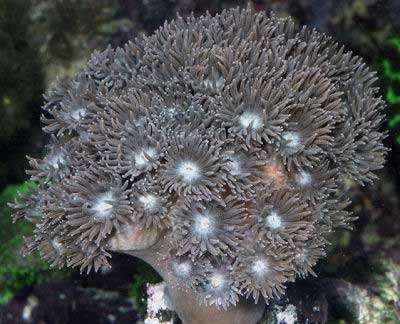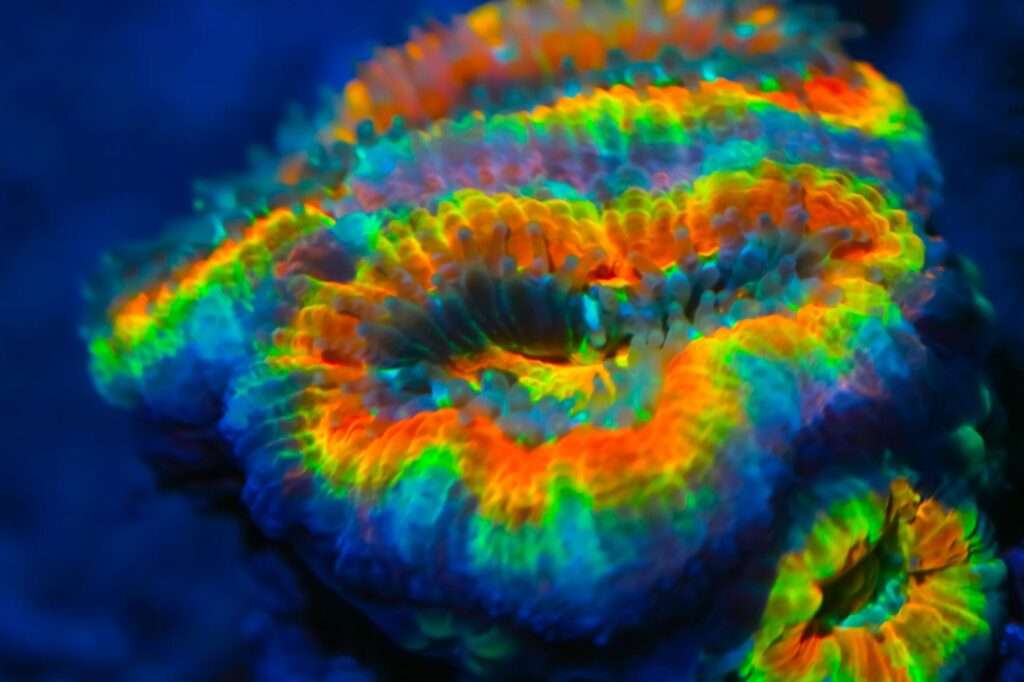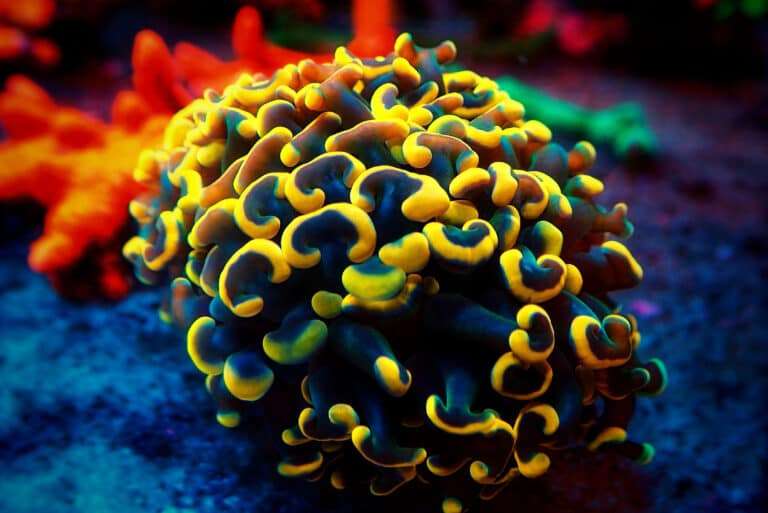
Stunning Turban Coral a favoured species of Turbinaria is Turbinaria peltata. Instead of being tubular like “ant hills,” the corallites that make up its skeletal structure are knobby and clustered together. Large and frilly polyps on this coral completely conceal the underlying skeleton, giving the coral an almost hairy appearance. Due to lack of feeding, a coral you could find in a store might not have as many polyps, but they are still pretty huge, making it easy to recognise. It will become one of your favourite corals once the polyp populations have exploded after feeding as necessary.
Several distinctive shapes are taken by the Turbinaria species. When the environment changes, they will dramatically change shape. A species that lives in shallow levels might be transplanted to deeper levels, and vice versa, and it would actually change its structure to take use of the lighting in each environment.
Habitat
Oken first described the Turbinaria genus in 1815. There are 80 nominal species of coral, with 10 of those being genuine Australian species. The Indo-Pacific Ocean, Eastern Africa, Indian Ocean, Coral Sea, the Great Barrier Reef, Solitary Islands, Lord Howe Island, and Cape Naturaliste are all places where T. peltata can be found. The T. peltata can be discovered at depths of 0 to 131 feet on protected, shallow reef slopes and foreshores with murky water.
Morphology
Depending on the depth at which it is located, T. peltata can take on a variety of morphologies and have a light skeletal structure. They are often marketed in “cup” shape. They can take on a columnar design to make the most of the available light. The corallites are not tubular like “ant hills,” but rather knobby. They have corallite calices, or openings, that range in size from 3 to 5 mm, and they are close together. To acquire and consume larger foods, they use their polyps. Due to lack of feeding, a coral you would see in a store might not have as many polyps, but they are still pretty huge in terms of polyp size and simple to identify. Mucus secretions are another method the polyps utilize to acquire food and eliminate waste. They might be brown, yellow, gray, or blue-gray with cream undertones.
In Captivity

- Feeding
Turbinaria genus has evolved a number of feeding techniques. They get some of their nutrients from a marine alga called zooxanthellae through a symbiotic interaction. The sole symbiotic genus in the Dendrophylliidae family is Turbinaria. They can also take in dissolved organic substances and planktonic creatures as well as food particles from the water column. While the Turban Coral requires lights in captivity for its zooxanthellae, it also needs to be given a range of other things. Feed meals like enhanced baby brine shrimp, cyclopeeze, mysis shrimp, silversides, finely chopped or other ocean-sourced fish that you can purchase at your local grocery store. You are not feeding them enough if their polyps start to vanish.
- Social Interactions and Compatibility
T. peltata doesn’t bother other corals. In addition, they have the capacity to build a sizable mucus net if their polyps become agitated. Other corals may become harmed if this mucus comes into touch with them. Therefore, there must be enough room between them and other corals. They should be maintained away from other corals’ sweeper tentacles and from the polyps of zoanthid corals. They are safe with fish that are reef-friendly, but they dislike being walked on, sat on, or bothered by any kind of crab.
Table





